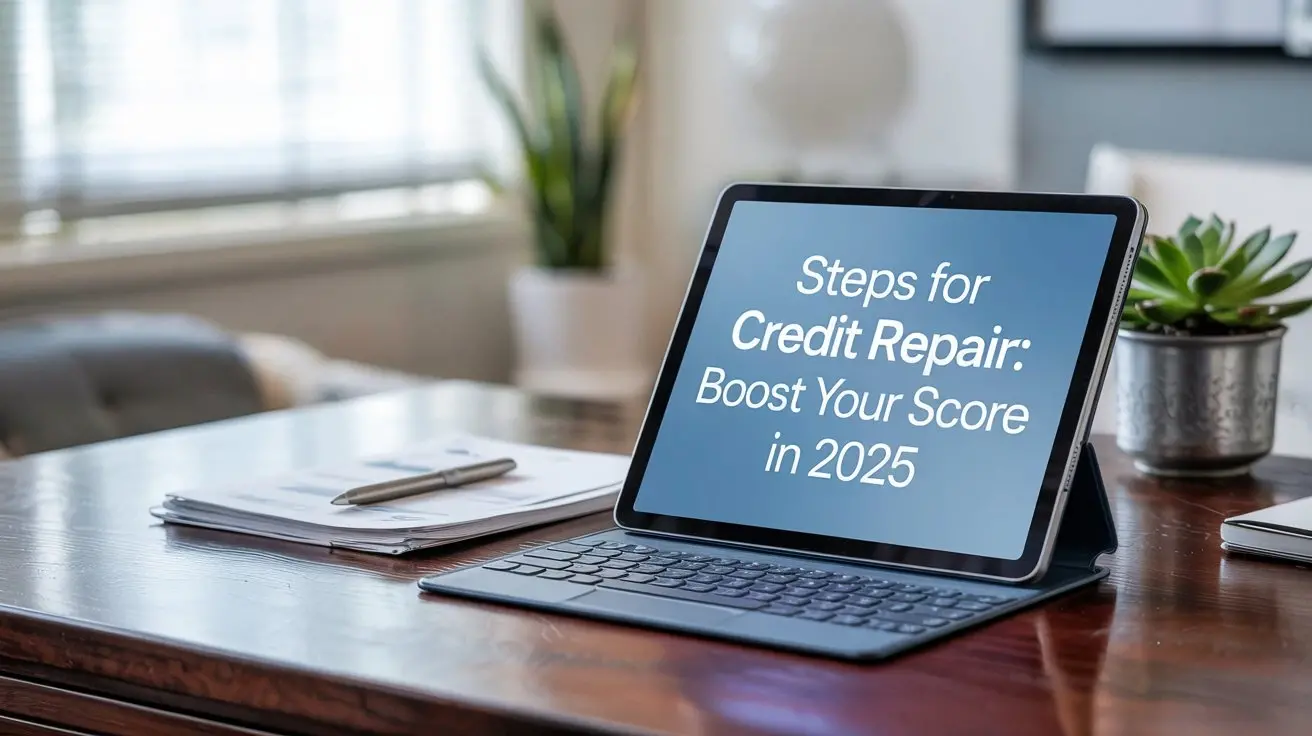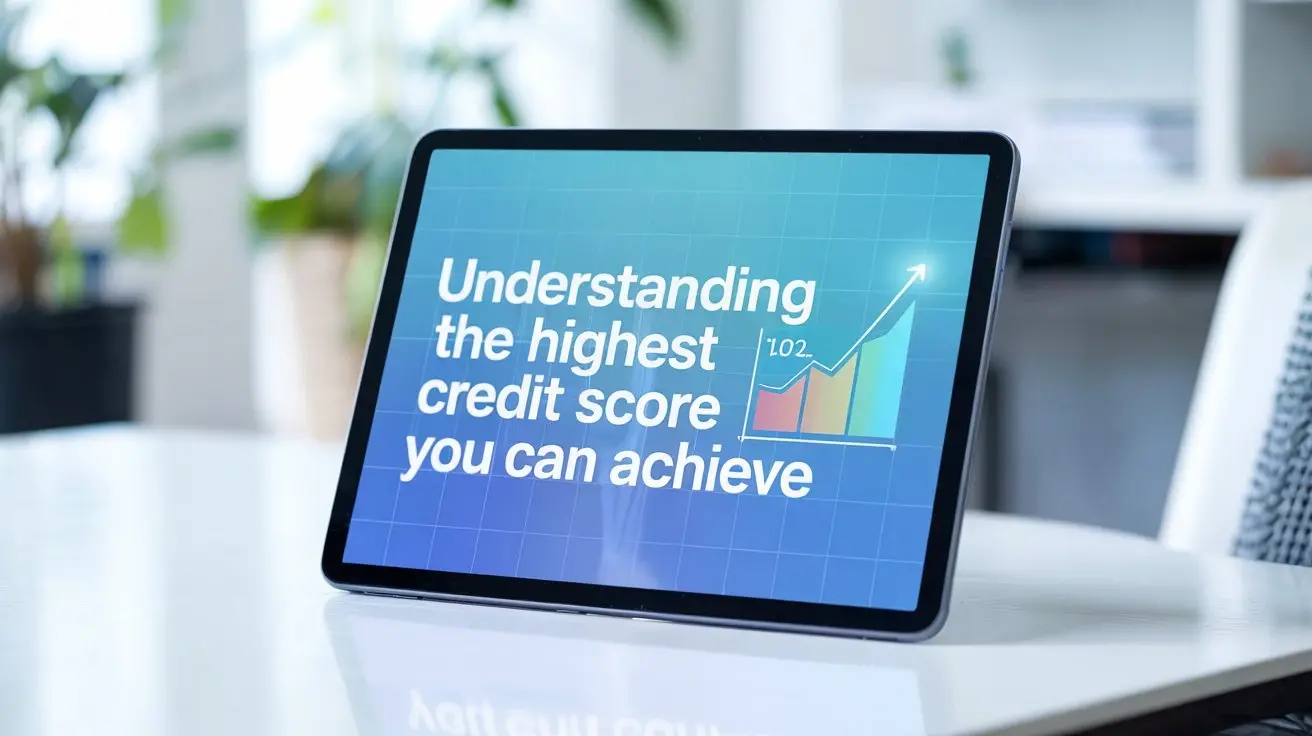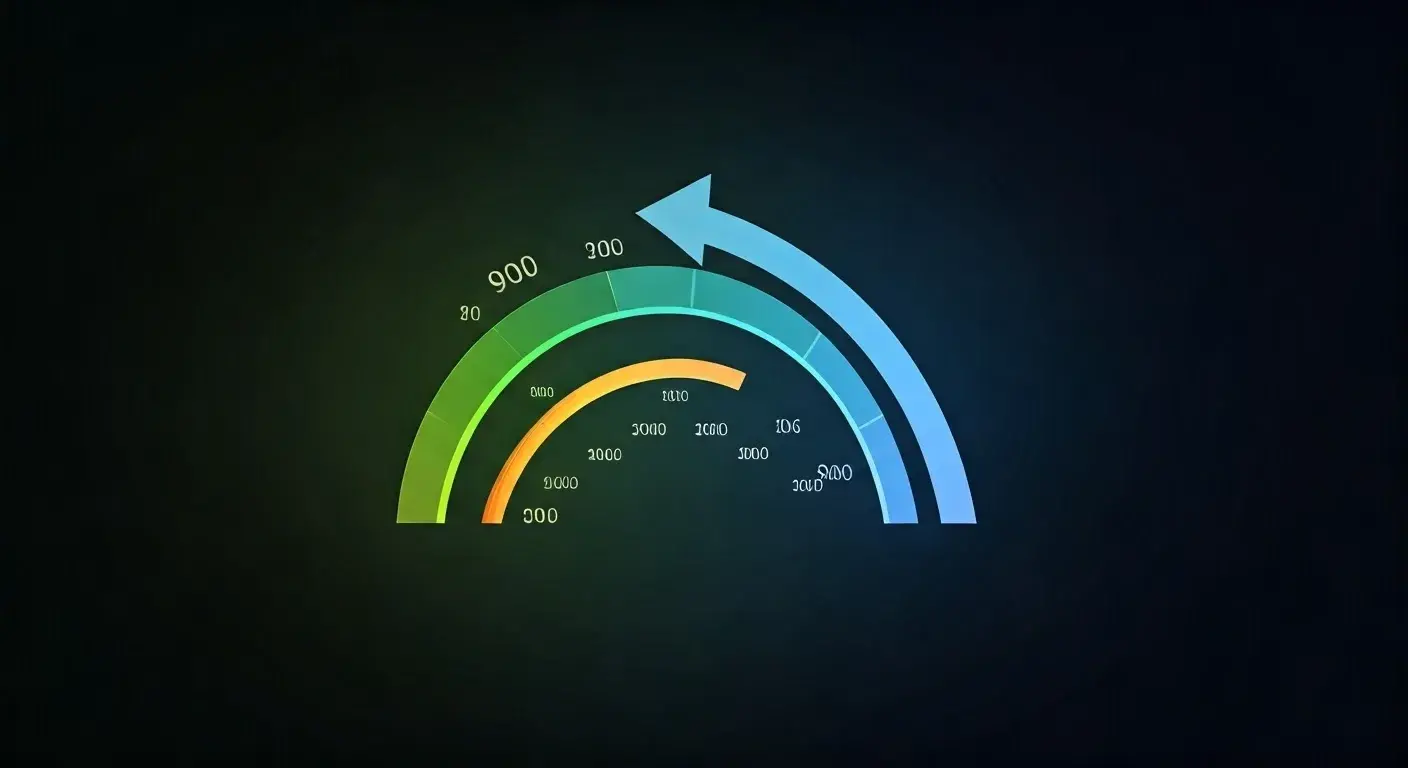-
Posted on: 05 Aug 2024

-
Struggling with a low FICO score can feel like hitting a financial brick wall. This comprehensive guide reveals actionable strategies and proven methods to effectively clean up your FICO score, empowering you to achieve your financial goals faster. We'll cover everything from understanding credit reports to disputing errors and building positive credit habits.
Understanding Your FICO Score: The Foundation
Before you can effectively clean up your FICO score, it's crucial to understand what it represents and how it's calculated. Your FICO score is a three-digit number, typically ranging from 300 to 850, that lenders use to assess your creditworthiness. It's a snapshot of your financial behavior, predicting the likelihood that you'll repay borrowed money. In 2025, FICO continues to be the dominant credit scoring model used by the vast majority of lenders.
The Five Key Factors of Your FICO Score
FICO scores are calculated based on five main categories, each with a different weight:
- Payment History (35%): This is the most critical factor. It reflects whether you pay your bills on time. Late payments, defaults, bankruptcies, and collections significantly damage this component.
- Amounts Owed (30%): This category looks at how much debt you carry, particularly in relation to your available credit. This is commonly known as credit utilization. A high credit utilization ratio (owing a large percentage of your credit limits) can negatively impact your score.
- Length of Credit History (15%): The longer you've had credit accounts open and managed them responsibly, the better. This includes the age of your oldest account, the age of your newest account, and the average age of all your accounts.
- Credit Mix (10%): Lenders like to see that you can manage different types of credit responsibly, such as revolving credit (credit cards) and installment loans (mortgages, auto loans, personal loans).
- New Credit (10%): This factor considers how many new credit accounts you've opened recently and how many hard inquiries are on your credit report. Opening too many new accounts in a short period can signal higher risk.
Understanding these factors is the first step in developing a targeted strategy to improve your score. For instance, if your payment history is weak, your primary focus should be on ensuring all future payments are made on time. If your amounts owed are high, reducing your credit card balances becomes paramount.
Reviewing Your Credit Reports: Your First Line of Defense
Your FICO score is derived from the information contained in your credit reports, which are compiled by the three major credit bureaus: Equifax, Experian, and TransUnion. It is imperative to review these reports regularly, at least annually, to identify any inaccuracies or outdated information that could be dragging down your score.
How to Obtain Your Free Credit Reports
Under federal law, you are entitled to one free credit report from each of the three major credit bureaus every 12 months. The official website for obtaining these reports is AnnualCreditReport.com. During 2025, this service remains the most reliable and authorized source for your free reports. Be wary of other websites that may charge for reports you are legally entitled to receive for free.
What to Look For in Your Credit Reports
When you receive your credit reports, scrutinize them carefully. Here are the key areas to pay attention to:
- Personal Information: Verify that your name, address, Social Security number, and date of birth are accurate. Any discrepancies could indicate identity theft or data entry errors.
- Account Information: Check that all your credit accounts (credit cards, loans, mortgages) are listed correctly. Ensure the account status (open, closed, paid off), balance, credit limit, and payment history are accurate for each account.
- Public Records: Look for any bankruptcies, liens, or judgments. These are serious negative items that can significantly impact your score. Ensure they are accurate and have been removed if they are no longer valid or have been discharged.
- Inquiries: Review the list of inquiries. "Hard inquiries" occur when you apply for credit, and they can slightly lower your score. "Soft inquiries" (like checking your own credit) do not affect your score. Ensure all hard inquiries are for credit applications you actually made.
Take your time with this process. It might be helpful to have a checklist or a spreadsheet to compare information across all three reports. Identifying errors is the first critical step toward correcting them and improving your FICO score.
Disputing Errors on Your Credit Report: Correcting the Record
Once you've identified inaccuracies on your credit reports, the next crucial step is to dispute them with the credit bureaus. This process is designed to ensure the accuracy of the information used to calculate your FICO score. By law, credit bureaus must investigate disputes and remove inaccurate or unverifiable information.
The Dispute Process: Step-by-Step
Here's how to effectively dispute errors:
- Gather Evidence: Collect all documentation that supports your claim. This could include payment stubs, account statements, letters from creditors, or any other proof that the information on your report is incorrect.
- Contact the Credit Bureau: You can initiate a dispute online, by mail, or by phone. The online dispute process is often the fastest. Visit the website of the specific credit bureau (Equifax, Experian, or TransUnion) and navigate to their consumer dispute section.
- Write a Dispute Letter (if mailing): If you choose to mail your dispute, draft a clear and concise letter. Include your personal information, the specific account or item you are disputing, the reason for the dispute, and attach copies of your supporting evidence. Keep the original documents. Send the letter via certified mail with a return receipt requested to have proof of delivery.
- Credit Bureau Investigation: Once a dispute is filed, the credit bureau has 30 days (or 45 days if you file within 30 days of receiving new information) to investigate. They will contact the creditor or data furnisher that provided the information to verify its accuracy.
- Resolution: If the investigation finds the information to be inaccurate, it must be corrected or removed from your report. You will receive a notification of the results of the investigation and an updated credit report.
What if the Creditor Doesn't Respond?
If the creditor fails to respond to the credit bureau's request for verification within the allotted time, the disputed information must be removed from your credit report, even if it was previously considered accurate. This is a powerful aspect of the dispute process.
Disputing with the Original Creditor
In some cases, it may also be beneficial to contact the original creditor directly to resolve the issue. For example, if a debt is listed as unpaid but you have proof of payment, contacting the creditor first might resolve the issue before involving the credit bureaus.
Correcting errors is a fundamental step in cleaning up your FICO score. Don't underestimate the impact of even small inaccuracies.
Strategies for Improving Credit Utilization: Lowering Your Debt Ratio
Credit utilization, the ratio of your outstanding debt to your total available credit, is a significant factor in your FICO score, accounting for about 30% of the calculation. Keeping this ratio low is crucial for a healthy score. In 2025, financial experts continue to recommend keeping your overall credit utilization below 30%, and ideally below 10% for the best results.
Understanding Credit Utilization Ratio (CUR)
Your CUR is calculated by dividing the total balance on your revolving credit accounts (like credit cards) by your total credit limit. For example, if you have a credit card with a $5,000 limit and a balance of $2,500, your utilization for that card is 50% ($2,500 / $5,000). Your overall CUR is the sum of all your revolving balances divided by the sum of all your revolving credit limits.
Effective Strategies to Lower Your CUR
- Pay Down Balances: This is the most direct way to lower your utilization. Focus on paying down balances on your credit cards, especially those with high utilization ratios. Prioritize paying more than the minimum payment.
- Make Multiple Payments Per Month: Instead of waiting for your statement closing date, make smaller payments throughout the month. This can help keep your reported balance lower. For example, if you have a $3,000 balance and a $10,000 limit, paying down $1,000 every two weeks can keep your reported balance significantly lower than if you wait until the end of the month.
- Request a Credit Limit Increase: If you have a good payment history with a particular credit card issuer, you can request a credit limit increase. If approved, this will increase your total available credit, thereby lowering your utilization ratio, assuming your balances remain the same. Be cautious not to increase spending if your limit is raised.
- Avoid Maxing Out Credit Cards: Never, if possible, let your credit card balances get close to their limits. This significantly harms your utilization ratio.
- Spread Out Your Spending: If you have multiple credit cards, try to distribute your spending across them rather than concentrating it on one or two. This helps keep the utilization on individual cards lower.
- Consider a Balance Transfer (with caution): If you have high-interest debt, a balance transfer to a card with a 0% introductory APR can help you pay down debt faster. However, be aware of transfer fees and the APR after the introductory period. Ensure you have a plan to pay off the balance before the promotional period ends.
It's important to note that credit card companies typically report your balance to the credit bureaus once a month, usually on your statement closing date. By strategically managing your payments around this date, you can influence the balance that gets reported and subsequently impact your credit utilization.
Managing Payment History for a Better Score: The Cornerstone of Credit
Payment history is the single most influential factor in your FICO score, accounting for 35% of the calculation. Consistently paying your bills on time is the bedrock of a good credit score. In 2025, lenders still place the highest premium on reliability and timely repayment.
The Impact of Late Payments
Even a single late payment can have a significant negative impact on your FICO score, especially if it's 30 days or more past due. The longer a payment is late, the more severe the damage. Multiple late payments, collections, charge-offs, and bankruptcies can drastically lower your score and remain on your credit report for up to seven years (bankruptcies can stay for 10 years).
Strategies for Ensuring On-Time Payments
- Set Up Automatic Payments: Most lenders offer automatic payment services. Set up auto-pay for at least the minimum payment on all your credit accounts. This is a foolproof way to avoid missing due dates.
- Use Payment Reminders: If you prefer not to use auto-pay, set up calendar reminders or use budgeting apps to alert you a few days before your bills are due.
- Pay More Than the Minimum: While paying the minimum ensures you avoid a late fee, paying more helps reduce your debt faster and demonstrates stronger financial management.
- Prioritize High-Interest Debts: If you're struggling to pay all your bills on time, prioritize those with the highest interest rates or those that are most critical (e.g., mortgage, car payment).
- Communicate with Lenders: If you anticipate a problem making a payment, contact your lender *before* the due date. Many lenders are willing to work with you to set up a temporary payment plan or deferment if you are proactive.
- Consolidate Debts (Strategically): For some, consolidating multiple debts into a single payment can simplify management and ensure fewer missed payments. However, this should be done thoughtfully to avoid accumulating more debt.
When you have past-due accounts, your primary goal should be to bring them current as quickly as possible. The longer an account remains delinquent, the more it will harm your score. Even if a payment is already late, paying it immediately is better than letting it become 60 or 90 days past due.
Addressing Collections and Charge-Offs: Tackling Past Due Accounts
Collections and charge-offs are serious negative marks on your credit report. A charge-off occurs when a creditor declares a debt unlikely to be collected and writes it off as a loss. A collection account is when the debt is sold to a third-party collection agency. Both significantly damage your FICO score and can remain on your report for up to seven years.
Understanding the Impact
These items signal to lenders that you have a history of not paying debts. This makes it much harder to get approved for new credit and can lead to higher interest rates if you are approved. In 2025, the impact of these items is still substantial, though their influence wanes over time.
Strategies for Resolving Collection Accounts
- Verify the Debt: Before paying anything, request a written validation of the debt from the collection agency. This confirms they have the legal right to collect the debt and that the amount is accurate.
- Negotiate a Pay-for-Delete: This is a powerful strategy. Ask the collection agency if they are willing to remove the collection account from your credit report entirely in exchange for payment. Get this agreement in writing *before* you pay. While not all agencies agree, it's worth asking.
- Settle the Debt: If pay-for-delete isn't an option, negotiate a settlement for less than the full amount owed. Even paying a portion of the debt is better than letting it remain unpaid. Again, get any settlement agreement in writing.
- Pay the Full Amount: If negotiation isn't possible or you prefer to clear the debt entirely, pay the full amount. While this won't remove the negative mark immediately, it will show the account as paid, which is better than unpaid.
- Payment Plans: If you can't afford to pay in a lump sum, see if the collection agency will accept a payment plan.
Dealing with Charge-Offs
Charge-offs are typically handled by the original creditor or a debt collector. The strategies for resolution are similar to collections: verify the debt, negotiate a settlement, or pay in full. Even if the debt has been charged off, paying it can still improve your situation by preventing further legal action and showing good faith.
It's important to remember that paying off a collection or charge-off does not automatically remove it from your credit report. However, a "paid" status is viewed more favorably than an "unpaid" status. The goal is to have these negative items age off your report as quickly as possible while minimizing their ongoing impact.
Building Positive Credit History: Long-Term Strategies for Growth
While cleaning up negative marks is crucial, building a strong positive credit history is essential for long-term FICO score improvement and financial health. This involves establishing and maintaining responsible credit habits over time. In 2025, consistent positive behavior remains the most reliable path to a high FICO score.
Key Strategies for Building Positive Credit
- Open and Use a Secured Credit Card: If you have a limited credit history or a damaged score, a secured credit card is an excellent starting point. You provide a cash deposit that typically becomes your credit limit. Use it for small, regular purchases and pay the balance in full each month.
- Become an Authorized User: If you have a trusted friend or family member with excellent credit, ask them to add you as an authorized user on one of their credit cards. Their positive payment history on that account can then be reflected on your credit report. Ensure they manage the account responsibly.
- Consider a Credit-Builder Loan: Some credit unions and community banks offer credit-builder loans. You make payments on the loan, and the money is held in an account until the loan is repaid. The payments are reported to the credit bureaus, helping you build positive payment history.
- Responsible Use of Existing Credit: If you already have credit cards, use them for small, recurring expenses (like gas or groceries) and pay them off in full every month. This demonstrates consistent, responsible usage.
- Maintain Low Credit Utilization: As discussed earlier, keeping your credit utilization low is vital. Aim to keep balances below 30% of your credit limits, and ideally below 10%.
- Keep Old Accounts Open: Even if you don't use them often, keeping older credit accounts open (provided they have no annual fees) can help increase the average age of your credit history, which is a positive factor.
- Diversify Your Credit Mix (over time): Once you have established a good track record with revolving credit, consider adding an installment loan, such as a small personal loan or an auto loan, and managing it responsibly. This shows you can handle different types of credit.
Building credit is a marathon, not a sprint. It requires patience and consistent, responsible financial behavior. The longer you demonstrate good habits, the more your FICO score will reflect this positive history.
Avoiding Common Pitfalls: Protecting Your Progress
As you work to clean up and improve your FICO score, it's essential to be aware of common mistakes that can derail your progress. Staying vigilant and informed will help you protect the gains you've made.
Pitfalls to Avoid
- Closing Old Credit Accounts: While it might seem intuitive to close unused credit cards, doing so can actually hurt your score. It reduces your total available credit, which can increase your credit utilization ratio, and it also reduces the average age of your credit history.
- Applying for Too Much Credit at Once: Each time you apply for credit, a hard inquiry is placed on your report, which can slightly lower your score. Applying for multiple credit cards or loans in a short period can signal to lenders that you are a high-risk borrower.
- Ignoring Small Debts or Collections: Even small amounts owed can negatively impact your score, especially if they go to collections. Address all debts, no matter how small.
- Falling for Credit Repair Scams: Be wary of companies that promise to remove accurate negative information from your credit report or guarantee a specific score increase. Legitimate credit repair is something you can do yourself, and reputable services will be upfront about what they can and cannot do.
- Not Monitoring Your Credit Reports: Regularly checking your credit reports is crucial for identifying errors and tracking your progress. Don't wait until you need to apply for a loan to check them.
- Missing Payments After Settling Debts: Even after settling a debt for less than the full amount, it's essential to continue making payments on any other outstanding debts to avoid further damage.
- Using Too Much of Your Available Credit: As repeatedly emphasized, maintaining low credit utilization is key. Avoid carrying high balances on your credit cards.
By understanding these common pitfalls and actively working to avoid them, you can safeguard your credit score and ensure that your efforts to clean up your FICO score lead to lasting positive results. Remember that responsible financial behavior is the most effective long-term strategy.
Example Scenario: Sarah's Credit Score Journey
Sarah, a 32-year-old marketing professional, found her FICO score stuck in the low 600s due to a few late payments from a few years ago and a high credit utilization ratio on her primary credit card. She decided to take proactive steps in early 2025. First, she obtained her free credit reports from AnnualCreditReport.com and found no errors. Her main focus became reducing her credit card balance. She shifted her spending habits, using her card for only essential purchases and paying it off in full bi-weekly. She also negotiated a payment plan with a collection agency for a small, old medical bill. Within six months, her credit utilization dropped from 75% to 20%, and her payment history began to improve as she made consistent on-time payments. By the end of 2025, Sarah's FICO score had climbed to the mid-700s, allowing her to qualify for a lower interest rate on a new car loan.
Current 2025 Statistics:
As of 2025, the average FICO Score in the United States is approximately 715. However, this average can vary significantly based on demographics and financial habits. Lenders often use different FICO score versions, but the core principles of scoring remain consistent. For example, a FICO Score of 740 or higher is generally considered "very good" to "exceptional," opening doors to the best loan terms. Conversely, scores below 600 can make obtaining credit difficult and expensive.
The landscape of credit scoring is constantly evolving, but the fundamental pillars of a strong FICO score remain constant: timely payments, low credit utilization, a healthy credit history length, a diverse credit mix, and careful management of new credit. By understanding these components and implementing the strategies outlined in this guide, you can effectively clean up your FICO score and build a stronger financial future.
In conclusion, cleaning up your FICO score is an achievable goal with a strategic and disciplined approach. By diligently reviewing your credit reports, disputing any inaccuracies, actively managing your credit utilization, prioritizing on-time payments, and addressing any outstanding collections or charge-offs, you lay a robust foundation for credit health. Building positive credit history over time through responsible usage of credit tools will further solidify your financial standing. Remember to avoid common pitfalls and stay informed about your credit. Taking these actionable steps will not only improve your FICO score but also unlock better financial opportunities and peace of mind in 2025 and beyond.











